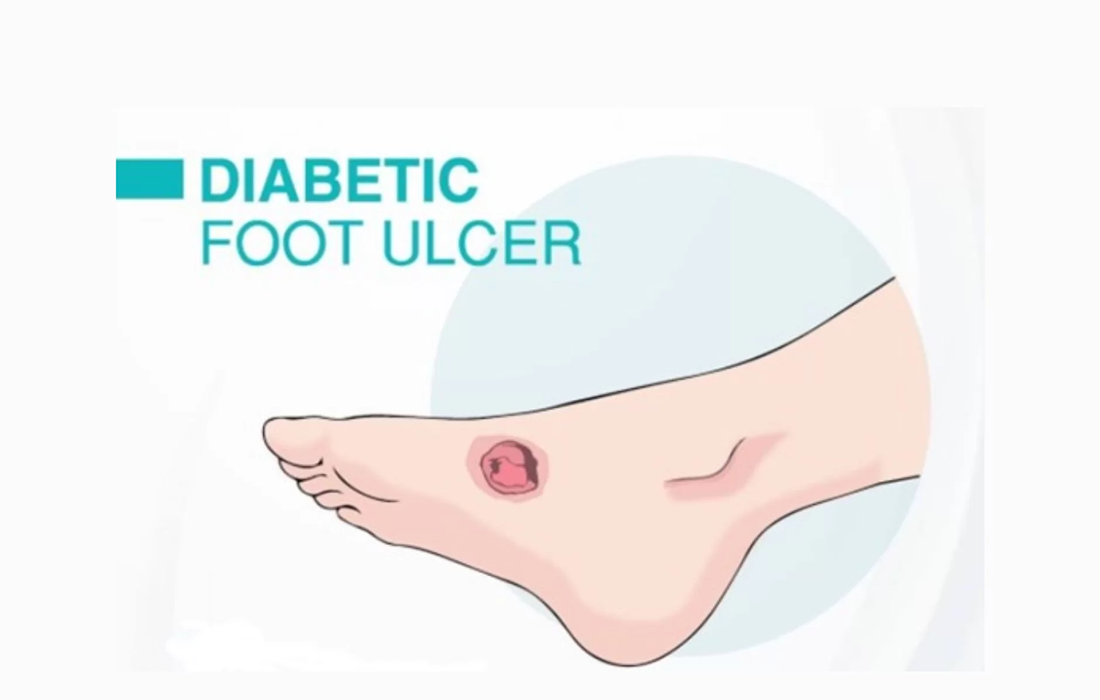Stem Cell Therapy for Specific Conditions
Stem Cell Therapy for Diabetic Foot Ulcers
Diabetes mellitus prevalence has increased immensely due to worldwide changes in nutrition and lifestyle and is currently estimated to affect 425 million adults in 2017 and to increase to 629 million patients by 2045.
What is a Diabetic Foot Ulcer (DFU)?
Diabetic foot ulcers are among the most common complications of patients who have diabetes mellitus that is not well controlled. It is usually the result of poor glycemic control, underlying neuropathy, peripheral vascular disease, or poor foot care. It is also one of the most common causes of osteomyelitis of the foot and amputation of the lower extremities.
They are usually present in areas of the foot which encounter repetitive trauma and pressure sensations, with Staphylococcus being the most common infective organism.
Diabetic foot ulcers are responsible for more admissions than any other diabetic complication. Today, diabetes is the leading cause of non-traumatic amputations in the US. Overall, about 5% of patients with diabetes mellitus develop foot ulcers and 1% end up with an amputation.
What Causes Diabetic Foot Ulcers?
The etiology is multifactorial. The common underlying causes are poor glycemic control, calluses, foot deformities, improper foot care, ill-fitting footwear, underlying peripheral neuropathy, and poor circulation.
About 60% of diabetics develop neuropathy and eventually can lead to a foot ulcer. The risk is increased in individuals with a flat foot as they have disproportionate stress across the foot.
How a Diabetic Ulcer is Developed?
The development has usually 3 stages:
- The initial stage is the development of a callus, which results from neuropathy.
- Motor neuropathy causes physical deformity and sensory neuropathy causes sensory loss that leads to ongoing trauma. Drying skin also contributes, and is caused by autonomic neuropathy.
- Frequent trauma of the callus results in subcutaneous hemorrhage and eventually erodes, becoming an ulcer.
Patients also develop severe atherosclerosis of small blood vessels that also contributes to diabetic foot infections, and because of blood not being able to reach the wound properly, the healing process is delayed, which can lead to necrosis and gangrene.
Current Treatment Guidelines
Current guidelines recommend debridement, management of infection, revascularization, and off-loading pressure to promote healing. However, ischemia, infection, neuropathy, and metabolic disorders frequently delay wound healing.
The advances in understanding the cellular processes of wound healing have led to the use of new therapeutic options. One of them is the use of cellular therapies as a promising strategy to treat many conditions, including diabetic foot ulcers.
Use of Regenerative Medicine
Stem cells can synthesize and secrete different anti-inflammatory cytokines and growth factors that can promote cell recruitment, immunomodulation, extracellular matrix remodeling, and angiogenesis, which promote wound healing.
They are also able to differentiate into different cell types, including myofibroblasts, keratinocytes, pericytes, and endothelial cells that participate in wound healing.
Current clinical and preclinical studies have focused on the use of bone marrow-derived mesenchymal stem cells (BM-MSCs) and the most commonly used method of administration of stem cells for DFU is by local injection.
The studies suggest that both local and systemic routes of stem cell therapy delivery are effective to heal DFU.
A meta-analysis published in the journal that comprised 7 studies, involving 224 patients compared the efficacy of stem cell therapy and conventional treatment. The results indicate that stem cell therapy is a more effective therapeutic strategy. This therapy can accelerate the healing process of chronic skin ulcers in the diabetic foot of patients and it can improve the microvascular regeneration around the wound area. Partial and/or complete healing was significantly higher in the stem cell group compared with the control group (77.4% vs. 31.9%).
The study showed that stem cell therapy can enhance the healing of diabetic foot ulcers and is associated with lesser pain, lower amputation rate, and improved prognosis compared with conventional treatment.
Sources:
Lopes L, Setia O, Aurshina A, et al. Stem cell therapy for diabetic foot ulcers: a review of preclinical and clinical research. Stem Cell Res Ther. 2018;9(1):188. Published 2018 Jul 11. doi:10.1186/s13287-018-0938-6
Oliver TI, Mutluoglu M. Diabetic Foot Ulcer. [Updated 2021 Aug 19]. In: StatPearls [Internet]. Treasure Island (FL): StatPearls Publishing; 2021 Jan-. Available from: https://www.ncbi.nlm.nih.gov/books/NBK537328/
Shu X, Shu S, Tang S, Yang L, Liu D, Li K, Dong Z, Ma Z, Zhu Z, Din J. Efficiency of stem cell based therapy in the treatment of diabetic foot ulcer: a meta-analysis. Endocr J. 2018 Apr 26;65(4):403-413. doi: 10.1507/endocrj.EJ17-0424. Epub 2018 Jan 22. PMID: 29353870.
Image from:

